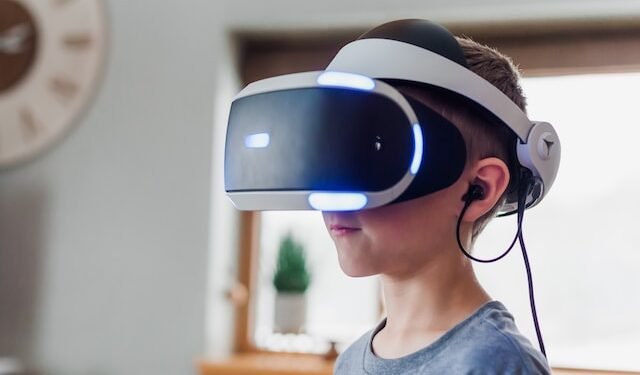Virtual reality is an artificial environment that is created with the help of software. With this, it is presented to the user in a way that inspires the user to be genuine. That means the user can easily believe that what he is seeing, hearing and feeling really exists. He accepts it as the real environment. With the help of computer hardware and software, a completely realistic environment is created. So today I thought why not provide you people with information about what is virtual reality so that it will be easier for you to understand this technology. So without any delay let’s start.
Contents
- 1 What is virtual reality
- 2 Related posts
- 3 How Agentic AI is Redefining Automation in the UK
- 4 Why Every Traveler Needs a Global SIM Card for Seamless Connectivity
- 5 How to Find Free Proxy Servers in Laos: A Comprehensive Guide
- 6 Importance of Performance Testing of ERPs
- 7 How MICR Printers Streamline Operations in the Banking Sector
- 8 How Technology is Revolutionizing Aircraft Maintenance
- 9 A Guide On All You Need To Know About VY6YS
- 10 Features of Virtual Reality
- 11 Believable
- 12 Interactive
- 13 Computer-generated
- 14 Explorable
- 15 Immersive
- 16 Which equipment do we use in virtual reality?
- 17 Head-mounted Displays (HMDs)
- 18 Immersive Rooms
- 19 Datagloves
What is virtual reality
Virtual Reality is a combination of two words ‘virtual’ and ‘reality’. Where ‘virtual’ means near and reality means the experience that we human beings feel (like the truth). Therefore ‘virtual reality’ means like reality. This means that it is a specific type of reality emulation. Virtual reality (VR) is a type of experience that can be experienced only with the help of computers and hardware. There is a believable, interactive 3D computer-created world that you can feel both mentally and physically.
Features of Virtual Reality
So let us know some essential features of virtual reality:
Believable
As you continue to believe in such a virtual world, you will not know at all whether it is a virtual reality or not.
Interactive
This virtual world will have to move with you to make it appear more interactive. If it does not look very interactive then it cannot be called virtual reality.
Computer-generated
This is very important because it is used only on powerful machines, which use realistic 3D computer graphics, so that it is fast enough so that it can create a believable, interactive, alternative world. With this, it can easily change in real-time, making it appear even more real.
Explorable
A VR world should be large and detailed so that it can be explored well. No matter how realistic a painting is, if it does not have much detail then it will not be very explorable. For a better VR, it is very important for it to be explorable.
Immersive
To make VR more believable and interactive, VR has to make both our body and mind immersive. If something is not very attractive then it will not attract our mind much so that we can easily know about the reality. Therefore, the more immersive VR is, the more real it will appear. So, VR is a very different world. It will force you to think that you are living in a completely believable virtual world. It should be two-way interactive so that the way you move, your VR also changes according to your reaction.
Which equipment do we use in virtual reality?
If you have ever seen someone using Virtual Reality, then you must have seen how they use a lot of equipment. The difference between an ordinary computer experience and a VR experience lies in the nature of its input and output. While an ordinary computer uses equipment like keyboard, mouse, speech recognition for input, VR uses sensors to detect how the body is moving.
Head-mounted Displays (HMDs)
The difference between VR and an ordinary computer screen is that: In VR, you can see a 3D image changing smoothly, in real-time, as you move your head. This is possible because here the user has to wear a head-mounted display, which looks like a big motorbike helmet. It consists of two small screens (one for each eye), a blackout blindfold that blocks out external lights (so the user has no distractions from the real world), and stereo headphones. These two screens display slightly different stereoscopic images, providing a realistic 3D perspective of the virtual world. HMDs usually have built-in accelerometers or position sensors that detect how your head and body are moving and adjust the picture accordingly.
Immersive Rooms
Immersive rooms are used as an alternative to HMD. Here the user is kept inside a room where the images displayed on the walls of that room are always changing. As you move in the room, the images will also change. Flight simulators primarily use this technique, where images of landscapes, cities, and airport approaches are projected on large screens outside the cockpit. This gives the feel of a different reality.
Datagloves
It is true that no matter what the reality is, we always have a desire to touch things. Even in VR technology, we can feel this thing through Datagloves. These datagloves are equipped with sensors which are wired on the outer side of the gloves so that they can easily detect motions. Here fiber-optic cables are used which are stretched according to the length of the fingers. Each cable has tiny cuts, as you move your fingers back and forth, more and less light escapes through these cuts.


















